Temperature and humidity in rooms for children: normative indicators and methods for their normalization
Each parent, regardless of the level of well-being and employment, can provide a healthy environment for his child. After all, it’s not only the quality of food, clothes, toys that favors the development of a small person, does it?
First of all, this is the optimum temperature and humidity in the premises for children, because this is a great way to avoid illness and buying medicines.
In this material we will tell you what the temperature and humidity conditions should be in rooms for children, as well as give advice on its normalization.
The content of the article:
Sanitary norms and requirements for premises
After numerous studies, checks and confirmation of the test results, which was carried out by a group of narrow-profile specialists (doctors, teachers, epidemiologists, scientists), optimal temperature and humidity indicators were derived.
And the state has fixed the obligation to comply with them in kindergartens and schools at the legislative level - SanPiN.
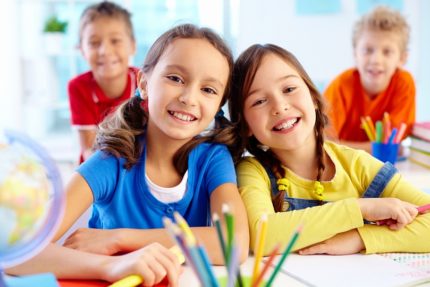
In addition, maintaining the recommended regimen indoors helps to strengthen immunity, children are much less likely to get sick. And in case of a disease, the immune system copes with viruses without any problems - diseases are less difficult to proceed.
Temperature and humidity in kindergarten
In the first years of their lives, it is important for children that standards are followed in the kindergartenSanPiNa by humidity and temperature. This is especially true when changing seasons, when heating and air conditioning systems are actively being used.
Since children are engaged in a wide variety of activities throughout the day, each room has its own temperature condition.

In accordance withSanPiNom The temperature in the garden should be:
- 22-24 ° C - nursery groups;
- 21-23 ° C - younger and older groups;
- 19-20 ° С - bedrooms;
- 22-24 ° С - toilet in the manger;
- 19-20 ° С - toilets of the older groups;
- 22-24 ° С - medical office;
- 19-20 ° С - halls for active classes;
- more than 12 ° С - walking veranda;
- from 29 ° С - pool;
- 25-26 ° С - locker room and showers;
- from 15 ° С - heated interbody transitions.
This temperature difference is explained by the fact that for each type of activity of children in the institution, a room / hall specially designed for this is equipped. The child sleeps in the bedroom and under the covers - he should not be cold / hot.
Physical education classes are held in the gym, where the temperature is slightly lower than in the games room, as the classes are active and children should not sweat in the process. In the game room, the temperature is slightly higher than in the gym, as calm classes and games take place there.
For all nursery rooms, the standards provide for a temperature higher than for older children.

These recommendations are regulated by garden workers depending on weather conditions. Children should not be in a room that is ventilated.
Humidity in kindergarten should be in the range of 40-60%. This value is adjusted due to ventilation:
- a short-term decrease in the temperature in the room by 2-4 ° C is considered normal;
- Do not ventilate through the toilet;
- the bedrooms are ventilated until daytime sleep;
- in winter, the windows close tightly half an hour before the children wake up.
Failure to comply with these standards can adversely affect the well-being and activity of children. As a rule, frequent colds in the group can be caused by neglect of prescriptions. SanPiNa preschool workers.

Violation of the temperature regime and not maintaining the necessary humidity provokes the appearance of such diseases in preschoolers:
- ARVI;
- growth of adenoids;
- persistent allergies and asthma;
- dermatitis.
If children in the group are often sick or have reasonable suspicions of non-compliance with the standards, parents can initiate a garden check, as well as contact the district education department or even the prosecutor's office.
Temperature and humidity at school
Requirements SanPiN 2.4.2.2821-10 no less strict regarding the organization of the optimal microclimate for students by the school institution.
And, although they are not focused on ranking indicators of temperature and humidity by age / class, they take into account the following factors:
- The limits of the upper and lower temperature threshold for classrooms, classrooms - 18-24 ° C.
- The temperature in the halls designed for classes related to active physical activity is 17-20 ° C.
- The minimum temperature in the pool and showers is from 25 ° C.
At school, it’s especially important to adhere to performance standards.SNIP on the balance of heat and humidity. Indeed, in the framework of one building, a large number of children gather every day who actively consume oxygen, so there is no way to do without regular airing.
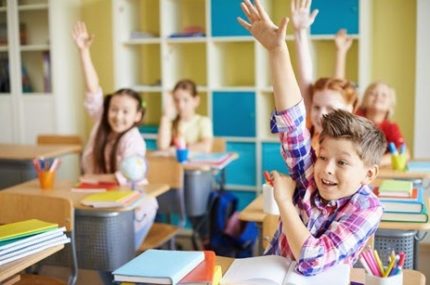
Maintaining an optimal temperature throughout the day, creates favorable conditions for the educational activities of children. They are not hot in physical education and not cold for 45 minutes in a sitting position. Such temperatures can be safely called comfortable for the child.
Normatively optimum humidity The air in the school is the same as in kindergarten.
To maintain it in the right parameters, regular airing is carried out:
- all classrooms - before and after training sessions;
- classrooms during breaks;
- school corridors - while students are in the classroom.
The duration of each airing is regulated depending on the season and the air temperature in the street. Short-term temperature decrease should not exceed 2-4 ° С.
Sometimes in the classroom the windows are closed during the lesson and a large number of children - 12-30 schoolchildren find themselves in a closed airspace. This is fraught for them with disability, a decrease in mental activity.

Therefore, even short-term airing during breaks is important, because the air in the class is enriched with oxygen. Especially in old buildings schools with problem ventilation.
The supervisory functions of maintaining the temperature and humidity conditions in schools are carried out by local authorities Rospotrebnadzor. Employees of this organization conduct scheduled and extraordinary inspections (in cases of suspected violations, complaints) of child care facilities.
For example, if the temperature is not observed at school, the child may faint and get seriously injured or get a disease such as asthma for life. Therefore, even suspicions that the staff of the institution is being violated, there may be sufficient reason for an unscheduled check.
If violations are identified, the following decisions may be made that are binding:
- The order to eliminate technical violations that adversely affect the temperature and humidity in the premises. This can be a breakdown of pipes of water supply, heating, etc.
- For negligence of employees can be punished with an amount equivalent to 100-300 minimum wages.
- According to the act of checking and identifying violations that caused moderate or severe harm to the health of the child, a criminal case can be instituted, which can lead to imprisonment of up to 5 years.
Parents can privately or collectively write a letter toRospotrebnadzor or leave a statement / complaint / claim on the official website of the organization. You can also contactdepartmental instances on the siteGovernment service - The Ministry of Education, the regional apparatus of the Commissioner for the Rights of the Child or the prosecutor’s office.

Do not be afraid to disturb someone’s peace or some kind of persecution of a child from the administration of a kindergarten or school. These problems are much easier to deal with than acquired asthma or chronic ENT diseases.
Temperature and humidity conditions at home
One of the reasons for the frequent incidence in children of all ages is not observing the temperature regime and critical humidity indicators in the apartment.More often this is due to the parents' ignorance of what norms to adhere to and how to check them.
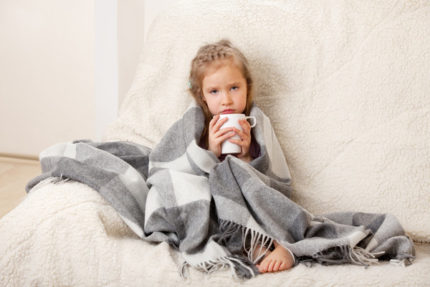
Sometimes parents are simply afraid to harm their child, leaving everything as it is and sincerely wondering why the child is apathetic, eating poorly or constantly getting sick.
To ensure a comfortable temperature and optimal humidity in the apartment for a child, you can focus on the prescribedSNIPs standards.
If the flowers dry in the house, especially during the heating season, this indicates a low level of humidity in the apartment. Urgent measures should be taken and raised to at least 50%, while the norm for a child is 40-60%.
In the common rooms comfortable for a person, a temperature of 21-24 ° C is felt, in the sleeping room you can maintain a lower rate - 19-21 ° C. Then the dream will be stronger and the child will breathe easier.
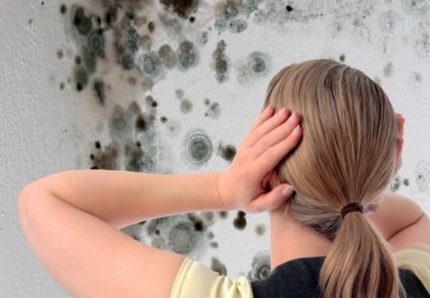
The temperature and humidity in the room must be balanced. Since if both indicators are high, the microclimate in the apartment will resemble a tropical one, which is also not useful for adults or children.
After all, such an environment promotes the reproduction and spread of pathogenic microbes and microorganisms. The ideal ratio is achieved at a temperature of 22-24 ° C and humidity - 50-60%.
Baby room
Since the child at birth falls into a new environment for him, the task of parents is to help him adapt, to create optimally comfortable and healthy conditions for him.
On the one hand, a newborn person is a very weak creature that needs to be protected, and on the other hand, it is unusually strong. Do not forget, his metabolism is accelerated, all body systems work in an enhanced mode.
22 ° C - the optimum temperature for a child’s room up to 6 months. From six months it can be reduced to 19-21 ° C. This temperature is favorable for the development of the baby.
Do not be afraid that the baby may be cold. He is comfortable. When trying to wrap him up, the child will try to turn around, and if he does not succeed, then sweat intensely. This can be fraught with dehydration of the baby's body, increases the risk of catching a cold illness even from a small draft.
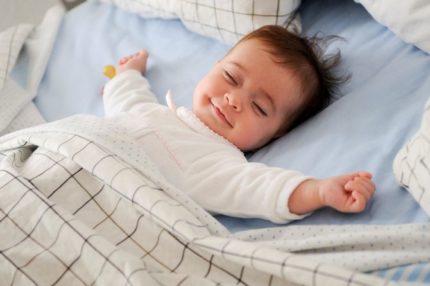
Pediatricians also recommend regularly ventilating the apartment with the newborn. Of course, not at any time and not for any climate, this will be the right decision.
But if you adhere to standards and monitor air humidity in an apartment with a newborn, you can create a microclimate in which both adults and children will feel as comfortable as possible.
Instruments for measuring temperature and humidity
To measure the temperature in any room of the apartment, you can use a conventional thermometer. It can be mechanical or electronic.
Such devices, in a bright colorful design, can be purchased at pharmacies, in specialized stores, and children's departments. The thermometer is installed at a neutral distance from heaters, batteries. Direct sunlight should not fall on it - this may affect the accuracy of the readings.
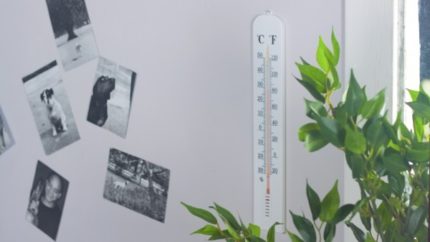
To measure humidity use hygrometer. This is a small compact device that subtly responds to changes in humidity in the room. You can buy a hygrometer in a specialized store of measuring equipment.
If one is not observed nearby, you can find electronic watches in any store that show not only time, but also temperature, humidity.
Of course, such functions in the watch have a certain error, but it does not reach critical sizes. In any case, with their help, you can track a significant deviation from the necessary parameters and take timely measures to correct them. The main thing in control is to notice the presence of problems in time.
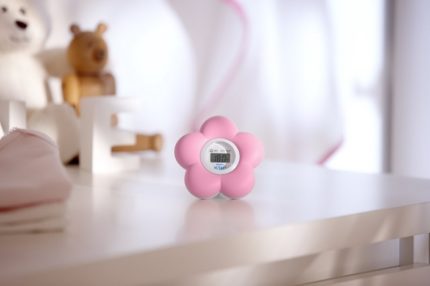
Failure to balance the temperature and humidity in the room for children can affect their health. So, a decrease in the child’s activity, problems with concentration, insomnia, lethargy, apathy can be the first symptoms of an improper indoor climate.
Too dry indoor air leads to a decrease in immunity, peeling of the skin, the appearance of allergies and asthma.
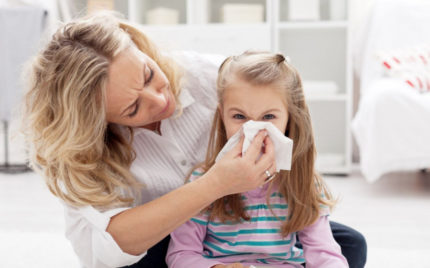
Low humidity provokes drying of the mucous membrane, skin and makes the child more vulnerable to infectious diseases.
Ways to normalize temperature and humidity
Correcting the imbalance in temperature and humidity is easiest with household appliances. Children's doctors recommend using air conditioners to regulate the air temperature in apartments. Only they should work not on an ongoing basis, but in a mode of one-time switching on.
In addition, air conditioners should be installed in adjacent or adjacent rooms with a nursery. This will ensure proper air circulation and minimize the risks of blowing a hot child.
And to control the level of humidity, you can use humidifiersdehumidifiers.
Since 2014, studies have been conducted in the West that speak of the dangers of these appliances for human health. But strict adherence to the manufacturer's recommendations regarding the use and maintenance of HVAC equipment minimizes the risk of possible harm.
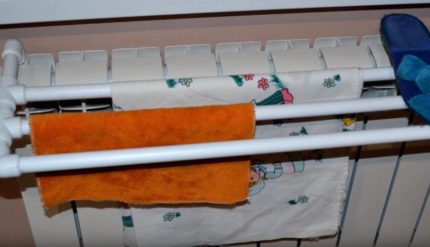
There are also other methods, with which you can easily normalize the heat and humidity in the apartment:
- a wet towel on the radiator will increase humidity;
- open aquarium with fish in the nursery;
- frequent wet cleaning;
- frequent airing.
Following these guidelines will help maintain an optimal indoor climate.
Conclusions and useful video on the topic
Humidifier from improvised means from a plastic bottle of milk:
5 ways to increase humidity in a nursery without a humidifier:
As you can see, it is not so difficult to monitor and regulate the level of temperature and humidity in the room. Cool air develops the ability of a child to resist colds.But too high a temperature in the room and low humidity, on the contrary, contribute to frequent colds and the appearance of chronic diseases.
Do you keep the temperature and humidity in the nursery at the right level? Please tell our readers what methods you use to increase the humidity in the room. Leave your comments in the box below.

 Humidity in educational institutions: legal requirements and standards
Humidity in educational institutions: legal requirements and standards 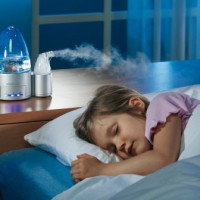 The effect of air humidity on human health: what dangers are too high or low humidity
The effect of air humidity on human health: what dangers are too high or low humidity 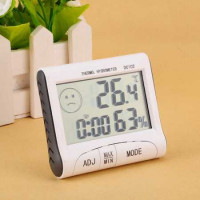 Norm of air humidity in the apartment: measurement methods + tips for normalization
Norm of air humidity in the apartment: measurement methods + tips for normalization 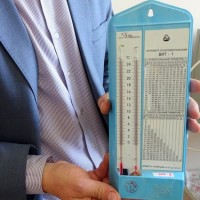 How to calculate humidity on a hygrometer: a manual for the use of devices + calculation examples
How to calculate humidity on a hygrometer: a manual for the use of devices + calculation examples  Standards for ventilation and air conditioning: air exchange in rooms for various purposes
Standards for ventilation and air conditioning: air exchange in rooms for various purposes 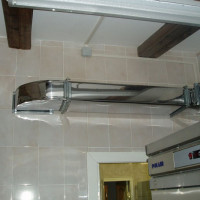 Moving ventilation in the kitchen: regulatory requirements for venting
Moving ventilation in the kitchen: regulatory requirements for venting  How much does it cost to connect gas to a private house: the price of organizing gas supply
How much does it cost to connect gas to a private house: the price of organizing gas supply  The best washing machines with dryer: model rating and customer tips
The best washing machines with dryer: model rating and customer tips  What is the color temperature of light and the nuances of choosing the temperature of the lamps to suit your needs
What is the color temperature of light and the nuances of choosing the temperature of the lamps to suit your needs  Replacement of a geyser in an apartment: replacement paperwork + basic norms and requirements
Replacement of a geyser in an apartment: replacement paperwork + basic norms and requirements